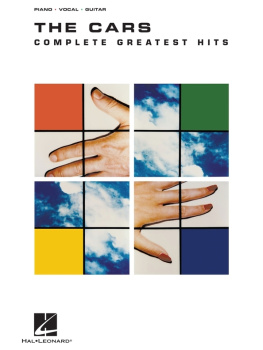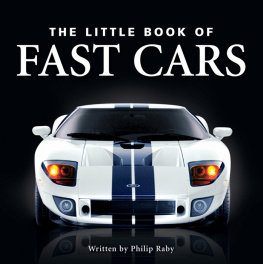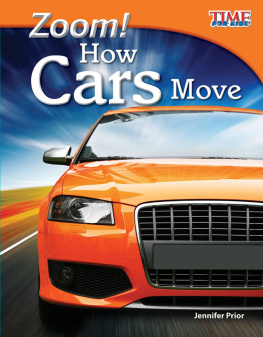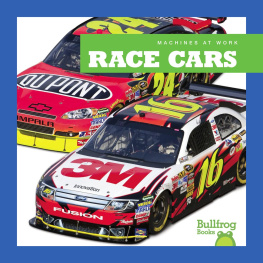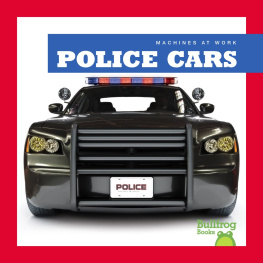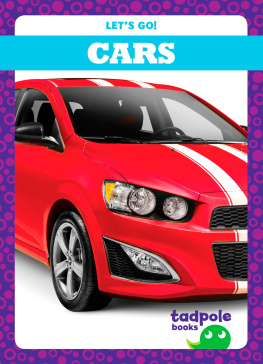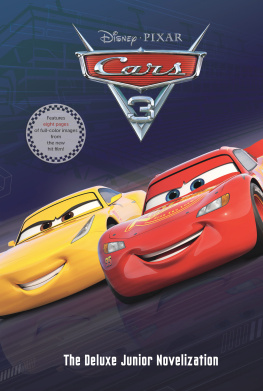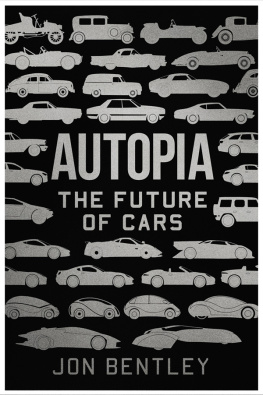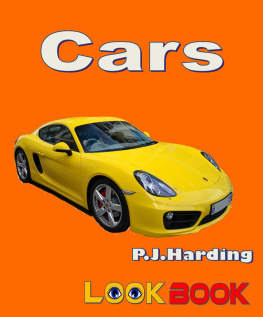
Lighting Study, Sharon Calahan , Digital paint over set render, 2010.
THE ART OF CARS 2
Copyright 2011 Disney Enterprises, Inc. and Pixar.
All rights reserved. No part of this publication may be reproduced in any form without written permission from the publisher.
ISBN: 978-0-8118-7891-3 (hc)
ISBN: 978-1-4521-4721-5 (epub2, mobi)
Designed by Ryan Corey for Smog Design Incorporated.
Chronicle Books LLC
680 Second Street
San Francisco, California 94107
www.chroniclebooks.com
Front Cover: Harley Jessup , Digital, 2010.
Materials and characters from the movie Cars 2. Copyright 2011 Disney/Pixar.
Disney/Pixar elements Disney/Pixar, not including underlying vehicles owned by third parties; and, if applicable: Hudson Hornet, Pacer, and Gremlin are trademarks of Chrysler LLC; Jeep and the Jeep grille design are registered trademarks of Chrysler LLC; Maserati logos and model designations are trademarks of Maserati S.p.A. and are used under license; Porsche is a trademark of Porsche; Sarges rank insignia design used with the approval of the U.S. Army; Volkswagen trademarks, design patents and copyrights are used with the approval of the owner, Volkswagen AG; Audi is a trademark of Audi AG; Bentley is a trademark of Bentley Motors Limited; BMW is a trademark of BMW AG; Mustang is a trademark of Ford Motor Company; Citron is a trademark of Automobiles Citron; Datsun is a trademark of Nissan Motor Co., Ltd.; FIAT, Alfa Romeo, and Topolino are trademarks of FIAT S.p.A.; Honda is a trademark of Honda Motor Co., Ltd.; Corvette, El Dorado, and Chevrolet Impala are trademarks of General Motors; Mini Cooper is a trademark of BMW AG; Nissan is a trademark of Nissan Motor Co., Ltd.; The trademarks OPEL, VAUXHALL, ASTRA, CORSA, MERIVA, and ZAFIRA are registered trademarks of Opel Eisenach GmbH/GM UK Ltd.; Peugeot is a trademark of Automobiles Peugeot; Piaggio is a trademark of Piaggio & C. S.p.A.; Renault is a trademark of Renault. Background inspired by the Cadillac Ranch by Ant Farm (Lord, Michels and Marquez) 1974.
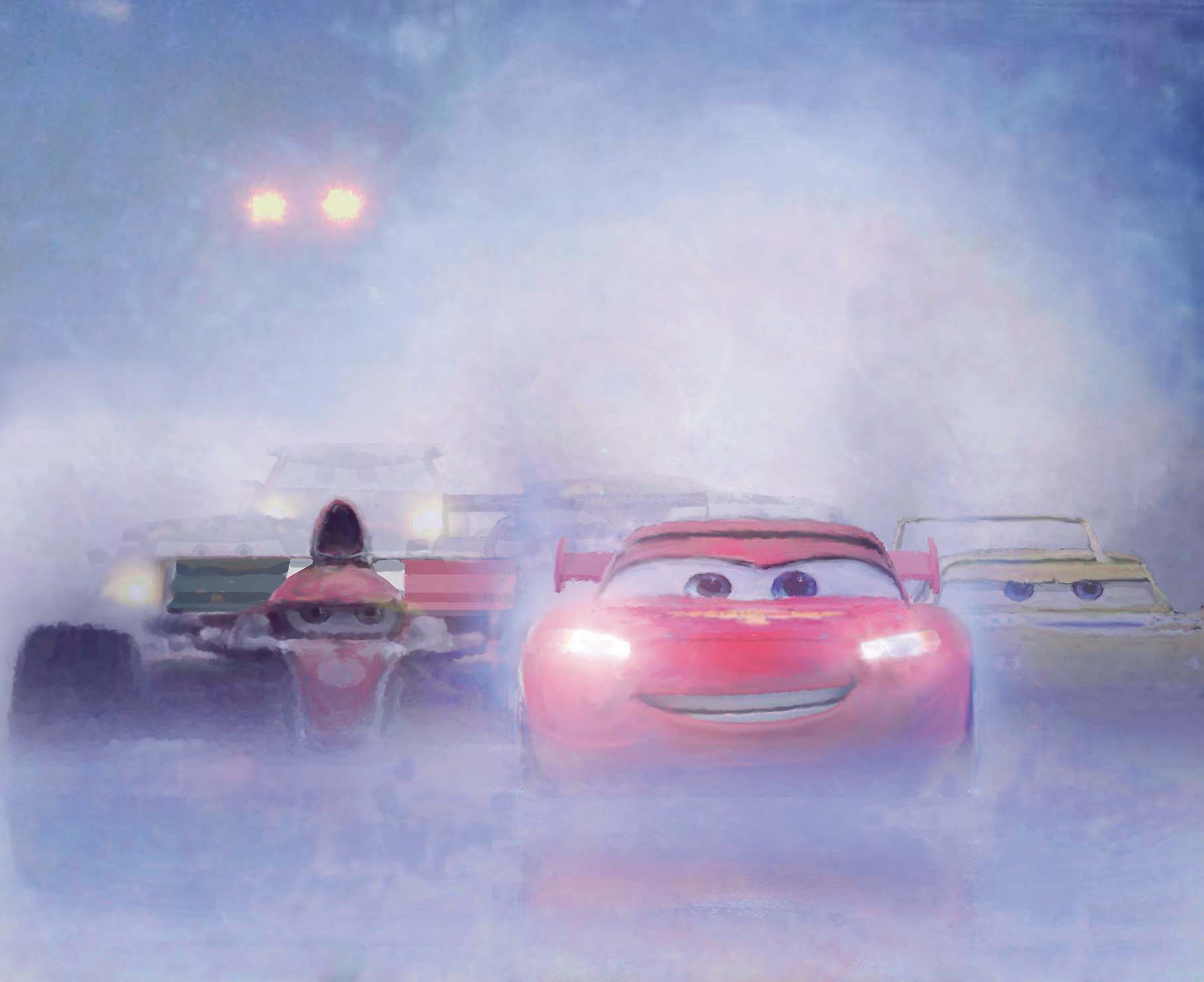
Harley Jessup Digital, 2010.
TO THE AMAZING
CARS 2 CREW
JOHN LASSETER, DIRECTOR
DENISE REAM, PRODUCER
FOREWORD

Lighting Study, Sharon Calahan , Digital paint over set render, 2010.
I believe there are three things you have to do to make a good film: you need to tell a compelling story with appealing characters set in a believable world. When youre making a sequel, the rules for two of those three, the characters and the world, are set for you; your main job is to tell a great new story. This challenge cant be under-estimatedcoming up with the right story is the hardest thing about making movies. But for me, its a special pleasure.
It takes four years to make one of our films. So much of us goes into themour personal experiences, the things we find funny, the things we like and dislike... theres a little bit of everyone who helped create the story in the finished film. By the time were done, I dont think of the characters and their world as creations anymore. I know them so well, theyre more like friends, or colleagues, or family members.
So for me, making another film with characters I know and love is like getting to spend time with old friends. I get to find out more about them; have the fun of seeing them in totally different places; and see them change and do things I couldnt have guessed the first time around. Because, for us, the most important thing is to tell a great story, one that will entertain and surprise us as well as the audienceand, to do that, just as with any movie, we have to do something new; we have to go places we werent expecting.
Lightning McQueen and Maters adventures in this film just so happened to call for some of the most ambitious sets, environments, and characters weve ever done at Pixar. The crew on this film had a huge task in front of them, but they rose to the challenge and more. Seeing their inspiring work for this world was one of the biggest pleasures of making this film.
John Lasseter

Lighting Study, Sharon Calahan , Digital paint over set render, 2010.

Armand Baltazar , Digital, 2010.
INTRODUCTION

Armand Baltazar , Digital, 2009.

Jay Shuster , Digital, 2009.
We dont green light ideas, we green light directors who have a passion for an idea. It has nothing to do with whether its an original or a sequel. What matters is that they have an idea they fall in love with. This is something we can make.
ED CATMULL, president and co-founder
The prints for Cars had barely been struck in May 2006 when John Lasseter began to devise the idea for what would become his fifth feature film as director. Traveling around the world for the Cars publicity blitz, he had vehicles as characters on the brain: Im really into racing, says Lasseter. Formula racing, rally, touring car, twenty-four-hour endurance racingthere are so many different kinds, and each one is so different from NASCAR. So this idea of an international race began percolating in my head, a race where Lightning McQueen would compete, and where we would get to see our characters in other countries.
Co-director Brad Lewis saw the potential immediately: From Americas standpoint, after Cars, Lightning McQueens the best race car in the world. So the question was, Is he really?
As we started developing this idea, Lasseter continues, I thought about having the story become like an Alfred Hitchcock film, like The Man Who Knew Too Much or North by Northwest, where the innocent gets caught up in this spy world. The impetus for this ideaadding a spy-thriller element to the movieoriginated even earlier in a discarded scene from the first film in which Sally and McQueen go on a date to a drive-in movie theater. Rob Gibbs (story artist on Cars) and the late Joe Ranft (head of story and co-director on Cars) created the movie within a movie: a spy film with an ultracool car named Finn McMissile who dispatches bad-guy Taxis of Death with high-tech gadgetry and copious amounts of aplomb. We just had fun designing this spy character, Lasseter says, and we named him Finn McMissile, because, well, hes got missiles hidden all over him!
Having found himself on the story-room floor in the first film, Finn McMissile was given a central role in Cars 2this time not as an intertextual piece of background on a drive-in movie screen, but as a major character living and breathing in the Cars world.
Changing genres for a follow-up might be unusual in Hollywood, where sequel development seems to consist solely of repeating a formula over and over. At Pixar, though, genre shifting is the norm in the sequels they have tackled to date. Although tonally similar,
Next page

